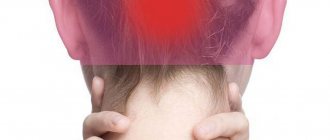Weakness and headache are very common symptoms that can occur in many conditions and diseases. Sometimes they only say that it is necessary to change their lifestyle, for example, adjust their diet or get more rest. But in some cases, these manifestations may indicate serious diseases, including rare ones.
For example, fatigue along with progressive muscle weakness are symptoms of Pompe disease. This is a rare hereditary disease that can occur at any age. In Pompe disease, due to a genetic mutation, the level of the enzyme alpha-glucosidase decreases, which leads to the accumulation of glycogen in tissues. Cardiac and skeletal muscle damage is most severe in the infantile form and skeletal muscle is predominant in Late-onset Pompe disease1.
The disease is manifested by a constantly progressive decrease in muscle tone. Muscle weakness may be accompanied by general fatigue, exercise intolerance, headache, cardiac dysfunction, shortness of breath, including when lying on your back. Due to a decrease in muscle tone, posture is disrupted - lumbar lordosis develops2.
However, the likelihood of developing Pompe disease is very low - the disease is extremely rare. In the vast majority of cases, weakness and headache are associated with more common diseases and conditions. Let's look at the most common reasons.
Common causes of weakness and headaches
Migraine is a pathology included in the list of diseases of global importance and burden for humanity. It affects about 12% of people worldwide. Migraine symptoms are not a sign of any disease. A migraine attack is characterized by unilateral localization of the headache, a pulsating nature, increased pain during exercise, nausea and/or vomiting, and increased sensitivity to light and/or sounds. In addition, weakness and fatigue may develop during an attack3.
Anemia is a condition in which the number of red blood cells (erythrocytes) and hemoglobin, which carries oxygen, is reduced. Anemia can have many causes, with iron deficiency leading the way4. Deficiency of this important mineral can develop due to a decrease in its supply (for example, with an unbalanced diet), impaired absorption, or increased losses (for example, with bleeding)5.
Signs of iron deficiency anemia5:
- weakness;
- headache, dizziness;
- poor tolerance to physical activity;
- decreased appetite;
- decreased performance, intellectual capabilities;
- pallor of the skin and mucous membranes;
- heartbeat and others.
Fibromyalgia is another condition that can cause headaches and weakness. They are accompanied by a complex of other symptoms: muscle soreness and stiffness, which increase with fatigue and overload. Along with them, digestion and sleep disorders may occur, anxiety, tension appear, concentration of attention decreases, etc. The causes of fibromyalgia are not known with certainty. It is assumed that the likelihood of its development increases with emotional stress, certain infections, and sleep disturbances6.
Respiratory viral infection (ARVI - flu or cold) is a very common cause of weakness and headache. As a rule, they are accompanied by a complex of symptoms: increased body temperature (from slight to severe), runny nose, cough, sore throat7.
Depression is one of the most common psychiatric diseases.
This is a painful condition with a characteristic feeling of melancholy, depression, despair, mental and motor retardation. With depression, a person may experience fatigue, headache, sleep disturbances, decreased appetite, sometimes cardiovascular symptoms (heart pain), and so on8.
What diseases can a headache be a symptom of?
Yulia Vladimirovna Vostretsova, anesthesiologist-reanimatologist, pain treatment specialist at the department for the treatment of patients with chronic pain syndromes at City Clinical Hospital No. 52, tells the story.
Secondary headache is a symptom of an underlying disease. In case of secondary headaches, the main task is to treat the underlying disease, since if it is successful, this also has a positive effect on the symptom of the headache - it either stops completely or at least greatly decreases.
Headache associated with brain tumors
Contrary to popular belief, headache is not a common symptom of a brain tumor. Only 30% of patients with a diagnosed tumor complain of headache at the initial appointment, and in only 1-2% of patients headache is the only symptom of the tumor. This pain is often accompanied by other neurological symptoms, worsens with exercise or changes in body position, and causes night awakenings. However, such symptoms can also occur with primary headaches, such as cluster headaches and migraines, which we discussed in the previous article. Vomiting a week before the onset of a headache may be a sign of a mass formation in the posterior cranial fossa, as well as pain that occurs when coughing, lifting heavy objects, or bending over. The appearance of nipple discharge or amenorrhea in itself should alert the doctor and the patient, and in combination with a headache should suggest diseases such as polycystic ovary syndrome or prolactin-secreting pituitary adenoma. In patients with an already confirmed cancer diagnosis, new headache requires the exclusion of brain metastases or carcinomatous meningitis.
Headache associated with vascular pathology
Subarachnoid hemorrhage is “the worst pain imaginable,” a thunderous headache. Accompanied by stiffness of the neck muscles at normal body temperature. Approximately 25% of all cases of thunderclap headache are associated with subarachnoid hemorrhage. However, in 50% of patients with hemorrhages, the headache may be milder. The main features of headache associated with subarachnoid hemorrhage are localization in the occipital region, piercing nature, extremely rapid increase in pain intensity, as well as meningeal signs. Isolated headache may be a symptom of a ruptured aneurysm, arteriovenous malformation, or intracerebral hemorrhage. Aneurysm of the posterior communicating artery can manifest as double vision, absence or decreased reaction of the icon to light, loss of focus, divergent strabismus, the anterior communicating artery - weakness of both lower extremities, the middle cerebral artery - weakness in the extremities on one side. A sharp increase in intracranial pressure in the posterior fossa can lead to limited mobility of the eyeball, strabismus, double vision, nystagmus, dizziness and loss of balance. If the above symptoms are present and subarachnoid hemorrhage is suspected, CT without contrast and lumbar puncture are performed, and if necessary, MR or CT angiography.
Arterial dissection
Headache occurs in most cases of dissection (dissection) of the carotid artery - it is one-sided and intense, often accompanied by pain in the face and neck on the same side, the occurrence of Horner's syndrome (drooping eyelid, constriction of the pupil, exophthalmos).
Stroke
With ischemic stroke, headache occurs only in 27% of cases. The diagnosis is made on the basis of clinical symptoms, which vary depending on the location of the stroke. It should be kept in mind that migraine with aura increases the risk of stroke.
Venous sinus thrombosis
This is a fairly rare pathology in which headache is present in 90% of cases. Other symptoms include changes in consciousness and papilledema. Risk factors include female gender, pregnancy and the postpartum period, as well as taking estrogen-containing hormonal contraceptives.
Reversible cerebral vasoconstriction syndrome
Characterized by recurrent attacks of headache of very high intensity with a sudden onset and rapid peak (thundering headache). Angiography visualizes vasoconstriction (narrowing) of the cerebral arteries, which resolves over the next 3 months. The cause of this pathology is not fully understood, but it is known that certain substances, such as marijuana, tacrolimus, cyclophosphamide, as well as some drugs from the group of antidepressants, can be triggers. The incidence is also higher in the postpartum period. The headache is usually bilateral with attacks lasting from 1 to 3 hours and recurring over several weeks. Approximately 40% of patients experience nausea, vomiting, and neurological deficits. This condition is transient and requires symptomatic treatment.
Arterial hypertension
It often develops when systolic pressure rises to 180 mm Hg. or diastolic up to 120 mm Hg. This type of headache usually intensifies when the pressure rises and decreases when it decreases. The pain is usually bilateral or diffuse, may be throbbing and worsen with physical activity.
Headache due to heart disease
It is known that myocardial ischemia can also be accompanied by headache. A characteristic feature of such pain is its reduction against the background of resolution of ischemia (with the introduction of nitroglycerin, etc.).
Headache in systemic diseases
Giant cell arteritis
Headache that first appears in a patient after 50 years of age and is accompanied by weakening of the pulsation of the temporal artery should suggest giant cell arteritis. This is a systemic vascular disease with predominant damage to extracranial arteries of medium and large caliber. The disease begins acutely or subacutely with general weakness, low-grade fever, night sweats, insomnia, nausea, loss of appetite, weight loss, muscle and joint pain. Headache is the most characteristic symptom of temporal arteritis. It is localized more often in the temporal region, sometimes in the frontal and parietal regions of the head, less often in the occipital region (in case of involvement of the occipital artery). The spread of the process to the arteries of the face is accompanied by the appearance of acute spontaneous facial pain or a kind of “intermittent claudication” syndrome, that is, pain in the masticatory muscles and tongue when eating and talking. This symptom is pathognomonic for temporal arteritis. Many patients experience visual impairments that can lead to complete blindness. The cause of blindness is either ischemic damage to the optic nerve due to damage to the orbital and postciliary arteries, or blockage of the central retinal artery. Laboratory tests reveal an increase in CRP and ESR. This diagnosis can be accurately confirmed only after a biopsy of the temporal muscle.
Tolosa-Hunt syndrome
The syndrome is characterized by intense unilateral headaches accompanied by impaired movement of the eyeball; attacks occur every few months or even years. People over 40 years of age are most often affected. Pathogenesis is associated with nonspecific inflammation in the cavernous sinus of the superior palpebral fissure or orbital cavity. Impaired or complete absence of movement of the eyeball occurs as a result of granulomatous inflammation of the cranial nerves. The main clinical manifestations are acute unilateral pain in the eye area and the appearance of double vision.
Headache associated with infection
It makes no sense to dwell on this point in detail, since many infectious diseases can be accompanied by a headache. For headaches of very high intensity, accompanied by a stiff neck and other meningeal symptoms, it is important to perform the necessary examinations and begin treatment in a timely manner.
Post-traumatic headache
Headache occurs in 70-90% of cases of head injury. It can be considered post-traumatic if it occurs within 7 days after the injury or 7 days after the restoration of consciousness and the cessation of painkillers. The pain phenotype can be different, often migraine or tension-type headache, and such headache can be accompanied by nausea, dizziness, cognitive impairment, anxiety and insomnia.
Pain after craniotomy
This pain also occurs within 7 days after surgery and usually regresses over the next 3 months. In some cases, the headache may become chronic. Risk factors for chronicity include a patient's history of primary headaches, as well as surgical interventions in the suboccipital area.
Headache associated with diseases of the eyes, nose, ear, sinuses and other craniofacial structures
Acute angle-closure glaucoma
Angle-closure glaucoma is a form of pathology in which fluid accumulates inside the eyes due to lack of access to the drainage system (the iris covers the angle of the anterior chamber). The result is an increase in intraocular pressure, which can lead to an acute painful attack. An attack of angle-closure glaucoma may be similar to a migraine, as it is a unilateral pain in the eye area, accompanied by nausea/vomiting, photophobia, visual disturbances in the form of blurred visual images and iridescent halos around the light spot. When examined during an attack, redness of the conjunctiva and a moderately dilated pupil are noted. Between attacks, the appearance of the eyeball and intraocular pressure are usually normal. Triggers of attacks are often: sudden changes in lighting, prolonged reading, as well as some drugs, such as tricyclic antidepressants, topiramate, acetazolamide, etc. An ophthalmologist will help establish the diagnosis.
Trochleitis
Trochleitis is an inflammation of the oblique muscle of the eye. The pain most often occurs in the inner corner or above the eyeball and can spread to the entire half of the head. The pain intensifies with eye movement, the paraorbital area is painful on palpation. There is usually no lacrimation or discharge from the nose. Some patients may experience diplopia. The cause of trochleitis is often unknown (idiopathic trochleitis), but it most often occurs in patients with rheumatologic diseases such as systemic lupus erythematosus, rheumatoid arthritis, enteropathic arthropathy, and psoriasis.
Rhinosinusitis
The symptoms of rhinosinusitis are familiar to many. Rhinosinusitis can be either an independent cause of headache or an aggravation of the primary headache. The diagnosis is made on the basis of X-ray diagnostics by an ENT doctor. Usually this pain is preceded by an infectious disease with rhinorrhea and nasal congestion.
Headache associated with temporomandibular joint pathology
The causes of joint dysfunction can be trauma, joint asymmetry, disc displacement, joint hypermobility, osteoarthritis. The headache associated with this pathology usually corresponds to the side of the affected joint, but can also be bilateral if muscles are involved in the pathological process. The pain occurs in the projection of the joint and periarticular region and has the character of a pulling, aching, pulsating or acute pain that can radiate to the ear, temporal or parietal region. Pain can occur at rest, but is often provoked by chewing or simply moving the temporomandibular joint.
Seek help from specialists!
Headaches should not be ignored! A pain treatment clinic specialist is called upon to understand the probable causes of its occurrence. After a detailed neurological examination, a further examination may be prescribed to clarify the underlying disease, the symptom of which is pain in the head. Our pain treatment clinic uses many treatment methods - which of them can help a particular patient will be decided by the doctor during a face-to-face consultation.
What else could be causing the symptoms?
Weakness and headache can be manifestations of a number of physiological (i.e. normal) and pathological conditions.
Dehydration is a condition that occurs when fluid loss exceeds fluid intake, for example, with diarrhea and vomiting. A lack of fluid in the body is indicated by thirst, a feeling of restlessness, loss of strength, weakness, lack of urination, decreased blood pressure and increased pulse, as well as cool and damp extremities 9.
Taking certain medications —headache and weakness can be side effects of many medications, including diuretics, antihypertensives, and others10.
Menstruation - hormonal changes that occur on the eve of and during menstruation can contribute to headaches and weakness. In 25-90% of women (according to various sources), premenstrual syndrome occurs 2-10 days before the start of menstruation. This is a complex of symptoms indicating cyclic neuropsychic, vascular, metabolic and hormonal disorders10.
PMS has about 150 symptoms that can occur in different combinations. More often, women experience increased fatigue, engorgement and tenderness of the mammary glands, bloating, nausea, drowsiness, back and lower back pain, and headache11.
Headaches in women - diagnostic methods
At the Clinical Brain Institute, you can undergo a complete informative examination if headaches occur. The process includes several stages, the results of which make it possible to assess the condition of the brain, nerves and blood vessels, as well as the spinal column. Diagnostic measures are selected individually and may include the following procedures:
- X-rays are especially informative if injuries to the cervical spine are suspected;
- Ultrasound with a contrast agent - used as part of a comprehensive diagnosis of vascular disorders;
- electroencephalography is a method of examining the brain and its parts, used to detect hematomas, tumors or injuries;
- CT, MRI - these techniques show a complete three-dimensional picture of the area under study, regardless of its location (ultrasound is difficult due to the location of the brain in the skull);
- laboratory methods - blood tests to identify infectious pathogens and determine general indicators.
Competent and timely diagnosis is one of the main conditions for successful treatment. At the first alarming symptoms, you should not try to make a diagnosis yourself, at home. It is better to turn to specialists with experience in solving identical problems who practice at the Clinical Brain Institute. They will conduct a consultation and clearly explain all the reasons that can cause a headache.
When should you see a doctor?
Sometimes headaches and fatigue require immediate medical attention. Alarm signals, when they appear, you should call an ambulance12,13:
- sudden severe headache;
- headache, fatigue in combination with limited ability to tilt the head forward, bringing the chin closer to the chest (stiff neck);
- confusion;
- visual impairment;
- sensory disturbances, such as numbness of the limbs;
- speech disorder.
In the absence of alarms, consultation with a doctor may be necessary routinely in cases where the cause of headaches and fatigue is unknown.
References
- Nikitin S. S. et al. Clinical recommendations for the provision of medical care to patients with Pompe disease // Neuromuscular diseases, 2021. Vol. 6. No. 1.
- Clinical recommendations. Pompe disease, 2021
- Morozova O. G. Migraine: modern ideas about classification, diagnosis, therapy and prevention (Part I) // Emergency Medicine, 2012. No. 4 (43).
- Stuklov N.I., Mitchenkova A.A. Anemia and iron deficiency. Global problems and solution algorithms // Therapy, 2021. T. 24. No. 6. P.147-155.
- Federal clinical guidelines for the treatment of iron deficiency anemia, 2015.
- Fibromyalgia. MSD Handbook (accessed 09/18/2019).
- Smirnov V.S. Modern means of prevention and treatment of influenza and ARVI // St. Petersburg: FARMIndex. – 2008.
- Kovrov G.V., Lebedev M.A., Palatov S.Yu. Depression in general practice //Russian Medical Journal, 2010. T. 8. No. 18. P. 504-8.
- Initial treatment of dehydration in acute malnutrition. World Health Organization. URL: https://www.who.int/elena/titles/bbc/dehydration_sam/ru/ (accessed September 19, 2019).
- Clinical pharmacology and pharmacotherapy: textbook. – 3rd ed., add. and processed / ed. V.G. Kukesa, A.K. Starodubtseva. – M.: GEOTAR-Media, 2012. – 832 p.
- Prilepskaya V.N., Mezhevitinova E.A. Premenstrual syndrome //Gynecology, 2005. T. 7. No. 4. P. 210-214.
- Semenov V.M., Zenkova S.K., Dmitrachenko T.I. Purulent meningitis: features of the clinical course, variant of differential diagnosis //Medical alphabet, 2011. T. 2. No. 11. P. 24-30.
- Parfenov V. A., Khasanova D. R. Ischemic stroke, 2012.
GZEA.PD.18.09.0435r
Headache treatment
Treatment tactics are selected individually for each patient. It may include symptomatic and etiotropic (affect the cause of the pain) methods, which together will either relieve headaches or allow you to cope with its exacerbations. The following procedures may be prescribed:
- drug treatment - for headaches of various origins, analgesics, anti-inflammatory drugs and antibiotics are prescribed, as well as drugs that stimulate blood circulation in the brain and vitamins;
- additional techniques - physiotherapy, massage, physical therapy;
- surgical intervention - performed according to indications and necessary to remove tumors;
- Gastrocorporeal hemocorrection techniques are aimed at cleansing blood vessels from excess cholesterol in atherosclerosis.
The Clinical Brain Institute offers comprehensive headache diagnostic and treatment programs. Specialists take into account the characteristics of the female body and prescribe the most effective and gentle treatment regimen. Here you can also consult on rehabilitation after injuries and concussions, drug correction of chronic diseases and the prevention of headaches.
Clinical Brain Institute Rating: 4/5 — 4 votes
Share article on social networks









